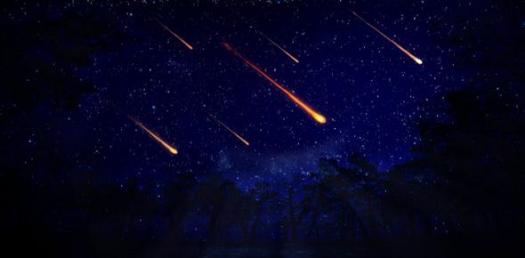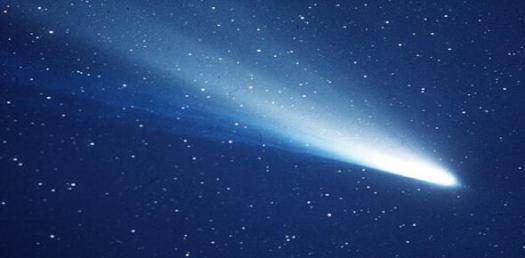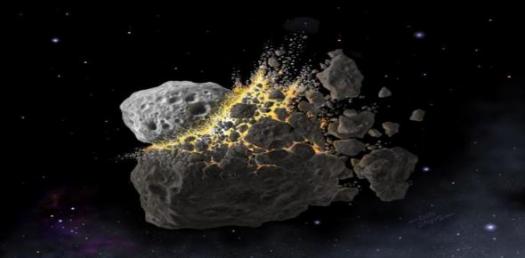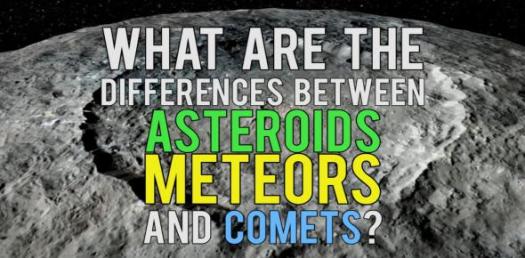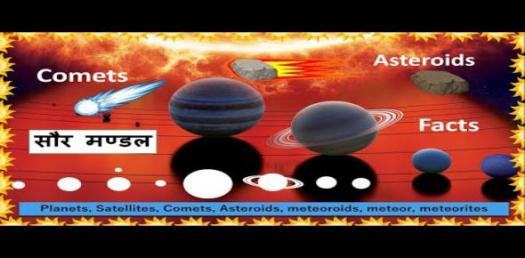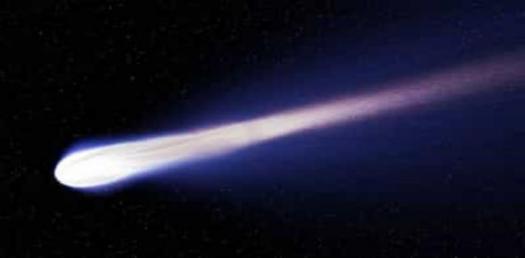Space Quiz: Asteroids Vs Meteoroids Vs Comets!

An Asteroid is an object larger than a meteoroid that orbits the sun and is made of rock or metal. Objects larger than 10 meters across used to be called Asteroids. A comet is a body of ice, rock, and dust that can be several miles in diameter and orbits the sun. A Meteoroid is a small rocky or metal object, usually between the size of a grain of sand or a boulder, that orbits the sun.
- 1.
A meteoroid originates from which of the following?
- A.
Comet
- B.
Asteroid
- C.
All of the above
- D.
None of the above
Correct Answer
C. All of the aboveExplanation
Meteoroids can originate from both comets and asteroids. Comets are made up of ice, dust, and rocky material, and when they come close to the Sun, the heat causes them to release gas and dust, creating a glowing coma and tail. Asteroids, on the other hand, are rocky and metallic objects that orbit the Sun. When a comet or asteroid enters Earth's atmosphere, it becomes a meteoroid. Therefore, the correct answer is "All of the above" as both comets and asteroids can be the origin of a meteoroid.Rate this question:
-
- 2.
A shooting star is comes from which of the following?
- A.
Asteroid
- B.
Comet
- C.
Meteoroid
- D.
None of the above
Correct Answer
C. MeteoroidExplanation
A shooting star comes from a meteoroid. A meteoroid is a small rocky or metallic object that is in space and orbits the sun. When a meteoroid enters Earth's atmosphere and burns up, it creates a streak of light in the sky known as a shooting star or a meteor.Rate this question:
-
- 3.
Which of the following is closer to the Sun?
- A.
Comet
- B.
Meteor
- C.
Meteorite
- D.
Asteroid
Correct Answer
D. AsteroidExplanation
Asteroids are closer to the Sun compared to comets, meteors, and meteorites. Asteroids are rocky objects that orbit the Sun, primarily located in the asteroid belt between Mars and Jupiter. Comets, on the other hand, are icy bodies that originate from the outer regions of the solar system and have highly elliptical orbits that can take them much farther from the Sun. Meteors are small particles that burn up in the Earth's atmosphere, while meteorites are the remnants of meteors that survive the journey through the atmosphere and land on the Earth's surface.Rate this question:
-
- 4.
What is the difference between Meteor and Meteoroid?
- A.
A meteor vaporizes before it hits the earth unlike Meteorite
- B.
A meteorite vaporizes before it hits the earth unlike Meteor
- C.
There is no difference
- D.
A meteorite comes from Asteroid while Meteor comes from Meteoroid
Correct Answer
A. A meteor vaporizes before it hits the earth unlike MeteoriteExplanation
A meteor vaporizes before it hits the earth, unlike a meteorite. This means that a meteor is a bright streak of light that is seen when a meteoroid enters the Earth's atmosphere and burns up due to friction. On the other hand, a meteorite is a meteoroid that survives its passage through the Earth's atmosphere and lands on the Earth's surface. So, the key difference between the two is that a meteor vaporizes in the atmosphere, while a meteorite reaches the Earth's surface.Rate this question:
-
- 5.
Debris comes from which of the following?
- A.
Meteoroid
- B.
Meteor
- C.
Comet
- D.
Asteroid
Correct Answer
C. CometExplanation
Debris comes from comets. Comets are celestial bodies composed of ice, dust, and rock that orbit the sun in highly elliptical paths. As a comet approaches the sun, the heat causes the ice to vaporize, releasing gas and dust particles. These particles, along with any rocks or other solid materials, create a trail of debris behind the comet. This debris can sometimes enter Earth's atmosphere, resulting in meteor showers.Rate this question:
-
- 6.
Which of the following is the biggest?
- A.
Meteor
- B.
Comet
- C.
Meteoroid
- D.
Asteroid
Correct Answer
D. AsteroidExplanation
Asteroid is the correct answer because it is the largest among the given options. While meteors, meteoroids, and comets are all celestial objects, an asteroid is typically larger in size compared to the others. Asteroids are rocky and metallic objects that orbit the sun, and some can be several hundred kilometers in diameter. In contrast, meteors are smaller objects that burn up in the Earth's atmosphere, meteoroids are even smaller fragments of asteroids or comets, and comets are icy bodies that release gas and dust when they come close to the sun.Rate this question:
-
- 7.
Which one of the following is the smallest?
- A.
Meteoroid
- B.
Meteorite
- C.
Comet
- D.
Asteroid
Correct Answer
B. MeteoriteExplanation
A meteorite is the smallest among the given options. A meteoroid is a small rocky or metallic object that is in space, typically smaller than an asteroid. When a meteoroid enters the Earth's atmosphere and burns up, it is called a meteor. If a meteor survives its passage through the atmosphere and lands on Earth's surface, it is then called a meteorite. Comets and asteroids are larger objects compared to meteorites and meteoroids.Rate this question:
-
- 8.
How many Asteroids are believed to exist?
- A.
895, 425
- B.
719, 435
- C.
794, 717
- D.
342, 457
Correct Answer
C. 794, 717Explanation
There are believed to be 794,717 asteroids in existence.Rate this question:
-
- 9.
How many Comets are believed to exist?
- A.
4, 120
- B.
3, 570
- C.
5, 241
- D.
1, 456
Correct Answer
A. 4, 120Explanation
There are believed to be 4,120 comets in existence.Rate this question:
-
- 10.
Which of the following is less likely to cause harm in the event of it landing on earth?
- A.
Asteorite
- B.
Meteorite
- C.
Comeorite
- D.
None of the above
Correct Answer
B. MeteoriteExplanation
Meteorites are less likely to cause harm in the event of them landing on Earth compared to asteroids and comets. This is because meteorites are smaller fragments that have already survived the intense heat and pressure of entering Earth's atmosphere. They have also lost most of their volatile substances during this process. On the other hand, asteroids and comets are larger objects that can cause significant damage upon impact due to their size and composition.Rate this question:
-
Quiz Review Timeline +
Our quizzes are rigorously reviewed, monitored and continuously updated by our expert board to maintain accuracy, relevance, and timeliness.
-
Current Version
-
Dec 27, 2023Quiz Edited by
ProProfs Editorial Team -
Apr 27, 2019Quiz Created by
AdewumiKoju
 Back to top
Back to top




